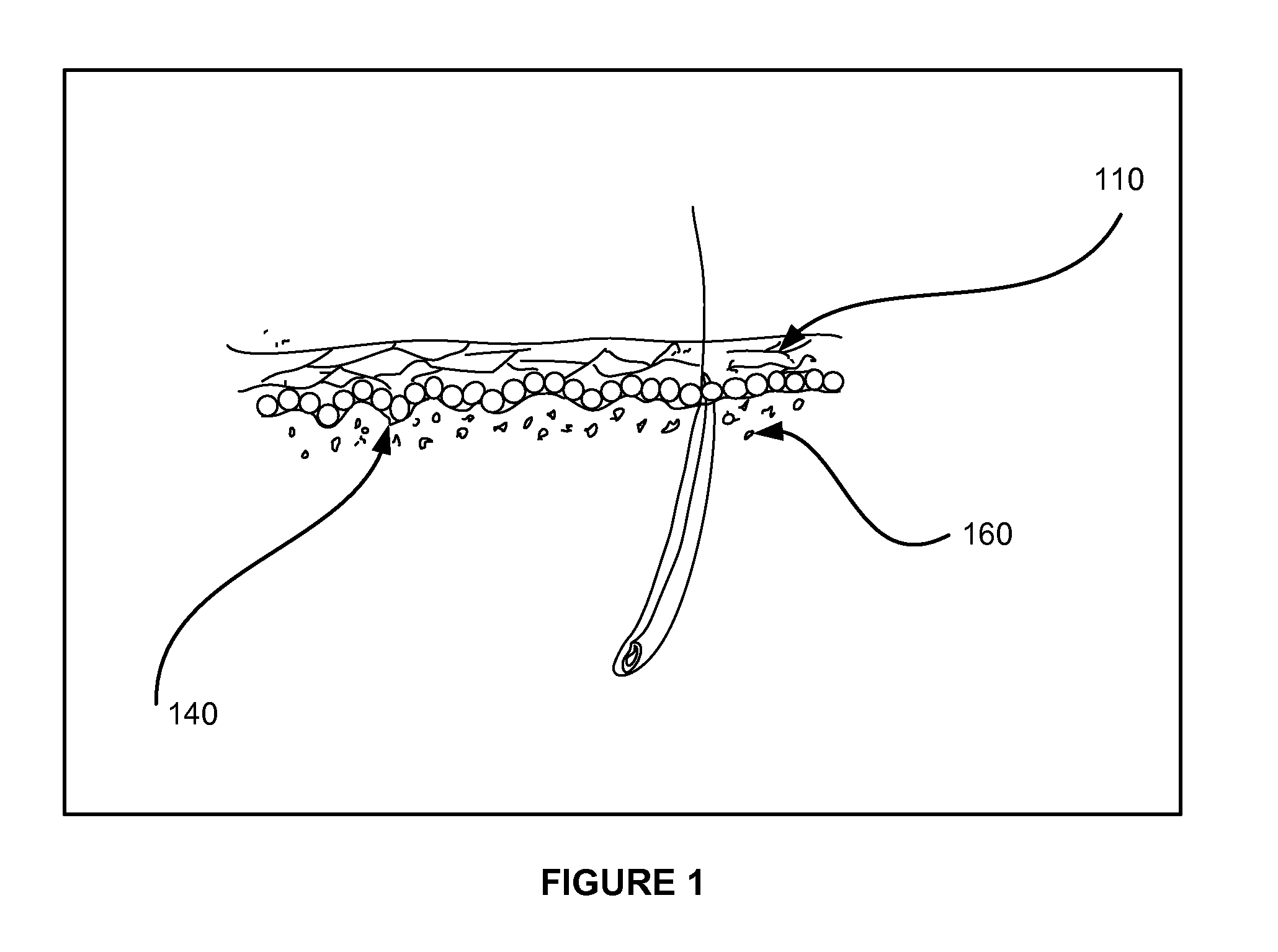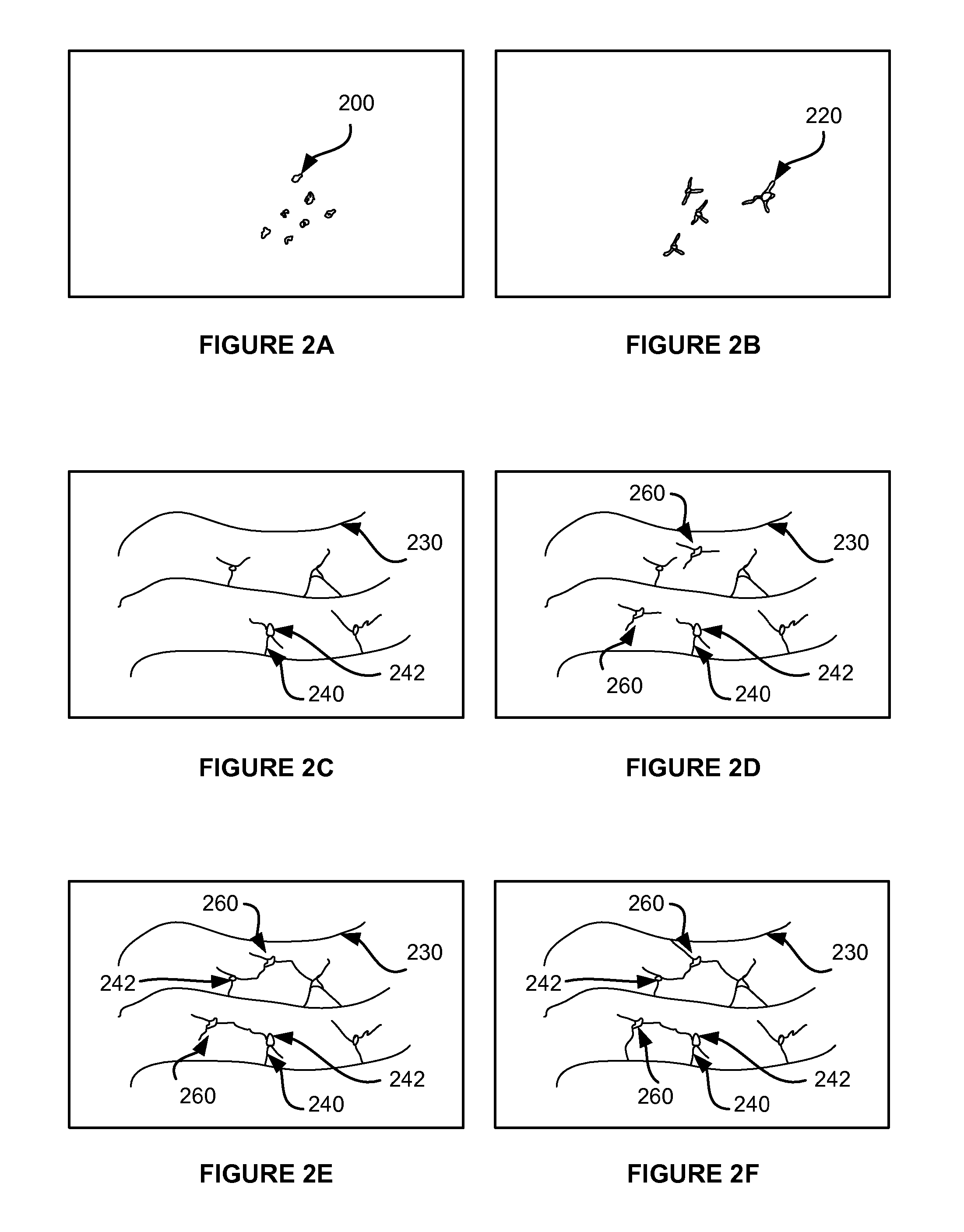Device and Method of Minimally Invasive Tattooing and Tattoo Removal
a technology of tattooing and tattooing, which is applied in the field of devices and methods of minimally invasive tattooing and tattoo removal, can solve the problems of limited color choice, high cost of time and money, and common occurrence of blood born infections, such as hepatitis, and achieve the effect of facilitating cross-linking
- Summary
- Abstract
- Description
- Claims
- Application Information
AI Technical Summary
Benefits of technology
Problems solved by technology
Method used
Image
Examples
Embodiment Construction
[0027] A method of delivering ink into the skin in tattooing is provided. The present method has considerable advantage in that it involves relatively less time, and relatively less pain than conventional processes. In a preferred embodiment, a tattooing method is virtually painless. In another embodiment, color and gray density can be the same level as that of modern computer printers, i.e., several million colors and a gray level of 10-12 bits, both of which are beyond the capability of the current tattooing methods. Furthermore, the tattoos created using methods according to certain embodiments can be removed with less treatment, e.g., fewer treatment sessions, using a laser.
Removal of Epidermis Layer
[0028] A skin area, e.g., where it may be desired to place a tattoo, includes an epidermis layer 110, as illustrated in FIG. 1, which includes mostly older skin cells that are densely packed to protect the skin from external intrusions of bacteria and other germs. This layer 110 se...
PUM
 Login to View More
Login to View More Abstract
Description
Claims
Application Information
 Login to View More
Login to View More - R&D
- Intellectual Property
- Life Sciences
- Materials
- Tech Scout
- Unparalleled Data Quality
- Higher Quality Content
- 60% Fewer Hallucinations
Browse by: Latest US Patents, China's latest patents, Technical Efficacy Thesaurus, Application Domain, Technology Topic, Popular Technical Reports.
© 2025 PatSnap. All rights reserved.Legal|Privacy policy|Modern Slavery Act Transparency Statement|Sitemap|About US| Contact US: help@patsnap.com



